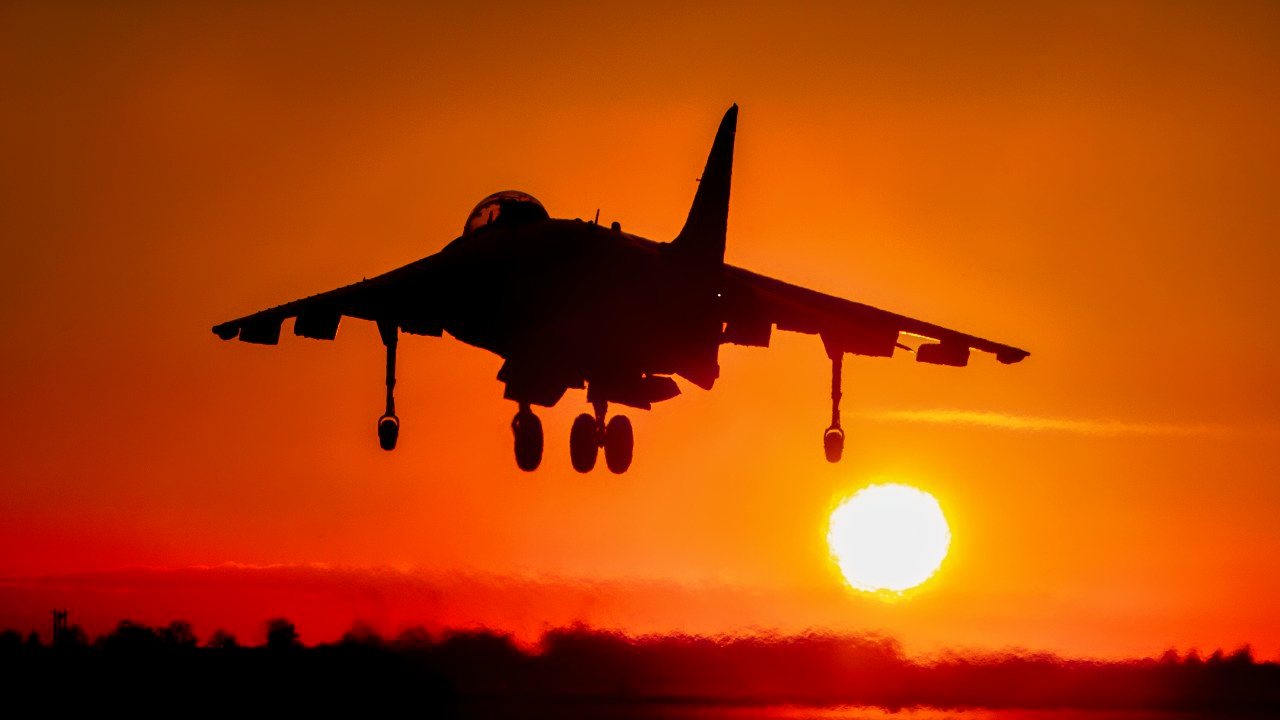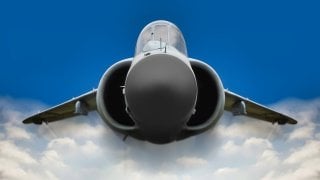The Sea Harrier Is One of the Best Fighter Jets Ever
My justification for including the Sea Harrier on a Top 5 list years back – to the exclusion of the F-4 Phantom and the Sukhoi Su-27 Flanker – was the plane's incredible 23:0 air-to-air kill ratio in the hands of Britain's Fleet Air Arm against Argentine Air Force opponents during the 1982 Falklands War, thus playing a key role in the UK's ultimate victory.
In the past, I have stated that the Sea Harrier is one of the best fighter planes of all time. I stand by that choice - and let me explain why.
Hail to the Sea Harrier
My justification for including the Sea Harrier on a Top 5 list years back – to the exclusion of the F-4 Phantom and the Sukhoi Su-27 Flanker – was the plane's incredible 23:0 air-to-air kill ratio in the hands of Britain's Fleet Air Arm against Argentine Air Force opponents during the 1982 Falklands War, thus playing a key role in the UK's ultimate victory.
For the record, two Sea Harriers were lost to enemy grind fire. Thus the Sea Harrier is one of only three jet fighter aircraft that is unbeaten in air-to-air combat, along with the F-15 Eagle and the aforementioned Su-27. And as I previously argued, in my professional opinion, the Flanker’s 6:0 score isn’t a big enough statistical sample to merit a Top 5 ranking.
The Harrier pilots, which launched from the decks of the Royal Navy aircraft carriers HMS Hermes and HMS Invincible, pulled off this remarkable fleet whilst tangling with the Argentines' A-4 Skyhawk, which was no slouch in the air combat department by any means, as demonstrated by the latter's destruction of Royal Navy and Royal Fleet Auxiliary surface ships such as destroyer HMS Coventry, RFA Sir Galahad and HMS Antelope – the latter loss producing arguably the most dramatic photograph from the conflict.
Though not to the same extent as the F-14 Tomcat and F/A-18 Hornet in the Top Gun film franchise, the Harrier even got its moment in the cinematic sun, thanks to Arnold Schwarzenegger in the 1994 James Cameron action-adventure True Lies.
The Harrier Harkens Back to a Hawk
Appropriately, the Harrier warbird in turn takes its name from a flesh-and-blood bird of prey, namely several species of diurnal hawks belonging to the Circinae subfamily and the Circus genus. The first generation of the Harrier Jump Jets was the Hawker Siddeley Harrier, which made her maiden flight in December 1967 and entered service in April 1969, thus revolutionizing the concept of vertical/short takeoff and landing (V/STOL) capabilities for fixed-wing attack aircraft.
The introduction of the British Aerospace Sea Harrier variant, informally known to its crews as the "Shar," in particular took place in 1979, and not a moment too soon as the Falklands War broke out a mere three years later. Eerily, at the time of the Sea Harrier's introduction, the Fleet Air Arm had actually been completely lacking a fixed-wing fighter!
Retired Lieutenant Commander David Morgan, who downed two Skyhawks and 1.5 Puma helicopters – making him the most successful British fighter pilot of the conflict – and received the Distinguished Service Cross (DSC) for his accomplishments, had much to say about the Sea Harrier’s operations:
"We knew that we had to provide not only air cover for the fleet, but also once we got troops ashore we knew that the Argentine Air Force was able to provide something in the region of 140 fast jet aircraft so we needed to put ourselves between the Argentine Air Force and the troops on the ground if we were going to have any hope of retaking the islands."
Beyond the Falklands
The Sea Harrier variant saw additional combat in the Balkans against Serbian ground forces, both during Operations Deny Flight and Deliberate Force over Bosnia and Operation Allied Force over Kosovo. One Sea Harrier was downed by a Serb SAM during Deny Flight, but its pilot, then-Lieutenant Nick Richardson, safely ejected and was lucky enough to land in territory controlled by friendly Bosnian Muslims.
A total of 98 airframes were built. Surprisingly, the Sea Harrier variant was unable to gain any foreign customers other than the Indian Navy, which acquired its first three such warbirds in 1983. However, other variants of the Harrier, such as the AV-8A and AV-8B Harrier II, blasted their way to fame in the hands of the U.S. Marine Corps, one of the few examples of the USMC "buying foreign," especially in the aircraft category, and thus paving the way to appear in the Schwarzenegger movie.
The Royal Navy retired its Sea Harriers in 2006, and the Indian Navy's "White Tigers" squadron followed suit in 2016. Several surviving Sea Harriers are displayed in multiple museums in India and the UK, including the Naval Aviation Museum (India) in Goa.

The only Stateside craft I'm aware of is the one owned by Nalls Aviation – owned and operated by retired USMC aviator Art Nalls – which also holds the distinction of being the world's ONLY civilian-owned and privately-flown Harrier of any kind in the world.
Sea Harrier Specifications General characteristics
- Crew: 1
- Length: 46 ft 6 in (14.2 m)
- Wingspan: 25 ft 3 in (7.6 m)
- Height: 12 ft 2 in (3.71 m)
- Empty weight: 14,052 lb (6,374 kg)
- Max. takeoff weight: 26,200 lb (11,900 kg)
- Powerplant: 1 × Rolls-Royce Pegasus turbofan, 21,500 lbf (95.64 kN)
Performance
- Maximum speed: 735 mph (1,182 km/h)
- Combat radius: 620 miles (1,000 km)
Armament
- Guns: 2× 30 mm ADEN cannon pods under the fuselage, with 130 rounds each
- Hardpoints: 4× under-wing pylon stations, and 1 fuselage pylon on centerline plus 2 attach points for gun pods with a total capability of 8,000 lb (3,630 kg) of payload.
- Rockets: 4× Matra rocket pods with 18 SNEB 68 mm rockets each
- Missiles:
- Air-to-air missiles:, AIM-9 Sidewinder, AIM-120 AMRAAM, R550 Magic (Sea Harrier FRS51)
- Air-to-surface missile: ALARM anti-radiation missile (ARM), Martel missile ARM
- Anti-ship missiles: Sea Eagle
- Bombs: A variety of unguided iron bombs (including 3 kg and 14 kg practice bombs) or WE.177 nuclear bomb (until 1992 on RN Sea Harriers
About the Author
Christian D. Orr is a former Air Force officer, Federal law enforcement officer, and private military contractor (with assignments worked in Iraq, the United Arab Emirates, Kosovo, Japan, Germany, and the Pentagon). Chris holds a B.A. in International Relations from the University of Southern California (USC) and an M.A. in Intelligence Studies (concentration in Terrorism Studies) from American Military University (AMU). He has also been published in The Daily Torch and The Journal of Intelligence and Cyber Security.
All images are Shutterstock.


